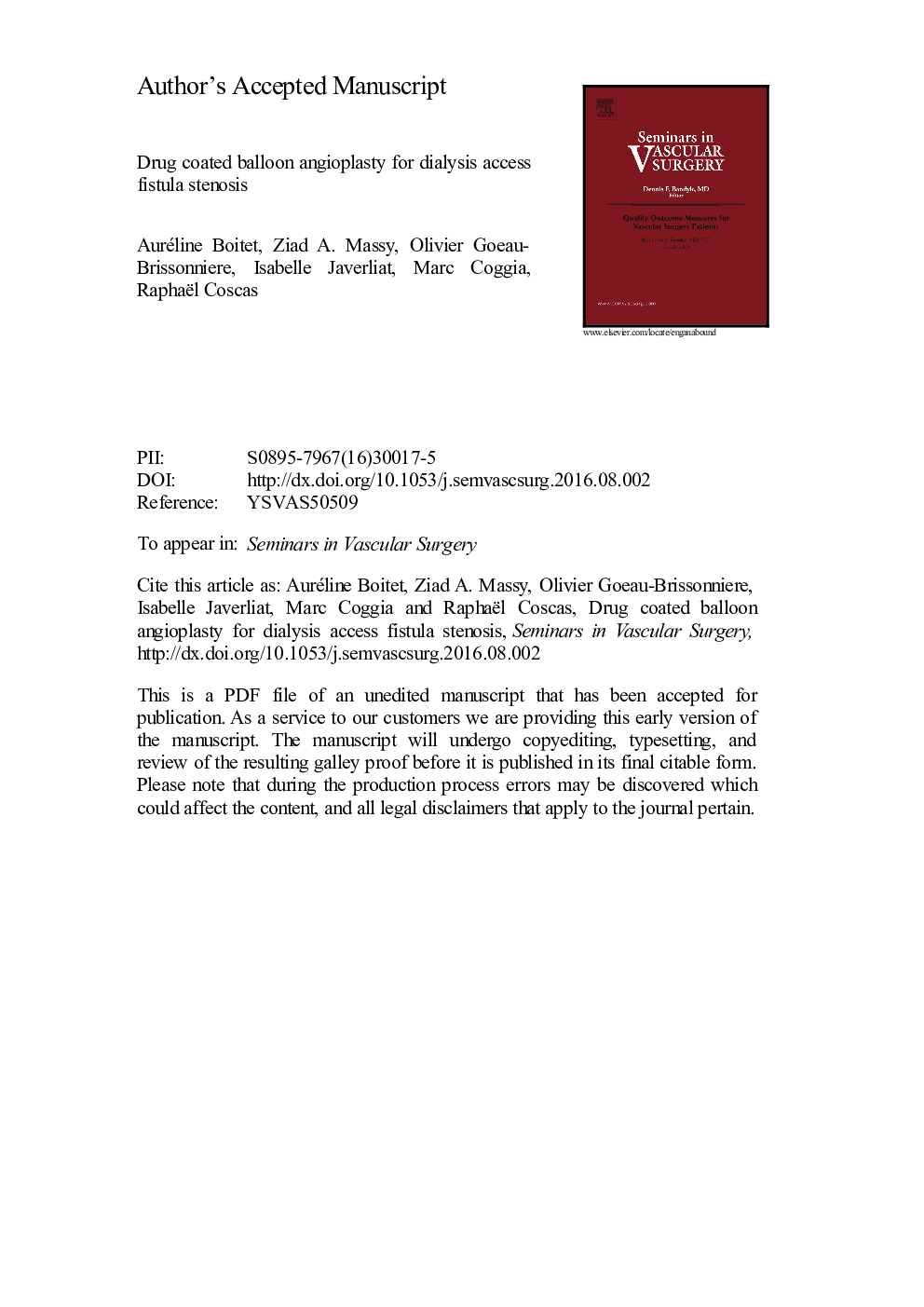| Article ID | Journal | Published Year | Pages | File Type |
|---|---|---|---|---|
| 5621680 | Seminars in Vascular Surgery | 2016 | 24 Pages |
Abstract
Maintaining vascular access patency represents a tremendous challenge in hemodialysis patients. Although “native” arteriovenous fistula (AVF) is currently recommended as primary vascular access, neointimal hyperplasia stenoses frequently develop, with a risk for AVF thrombosis and vascular access loss. For years, first-line treatment of AVFs stenoses has been percutaneous transluminal angioplasty, generally with high-pressure or cutting uncoated balloons. However, restenosis and reintervention rates remain incredibly high and occur, according to recent studies, in up to 60% and 70% of patients at 6 and 12 months, respectively. Drug-coated balloons delivering paclitaxel at the angioplasty site have proved their superiority in the treatment of coronary and peripheral arterial stenoses. Paclitaxel reduces neointimal hyperplasia and drug-coated balloons, therefore, it represents an attractive option for AVF stenoses. Because data are scarce, the aim of this paper was to review the concepts and current results of drug-coated balloons in AVF stenosis management.
Related Topics
Health Sciences
Medicine and Dentistry
Cardiology and Cardiovascular Medicine
Authors
Auréline Boitet, Ziad A. Massy, Olivier Goeau-Brissonniere, Isabelle Javerliat, Marc Coggia, Raphaël Coscas,
